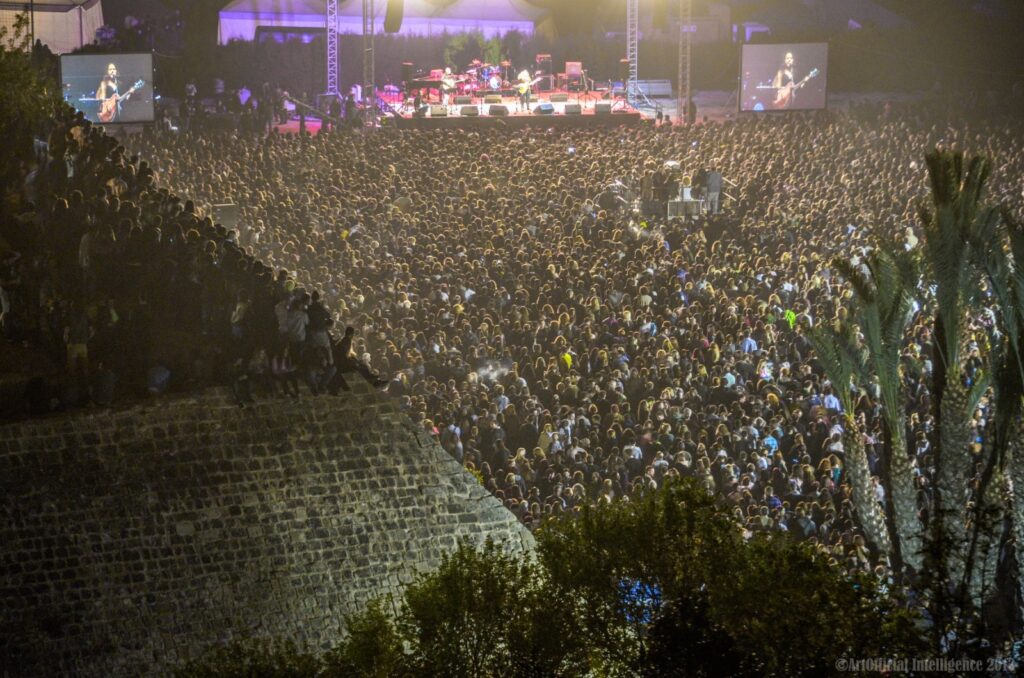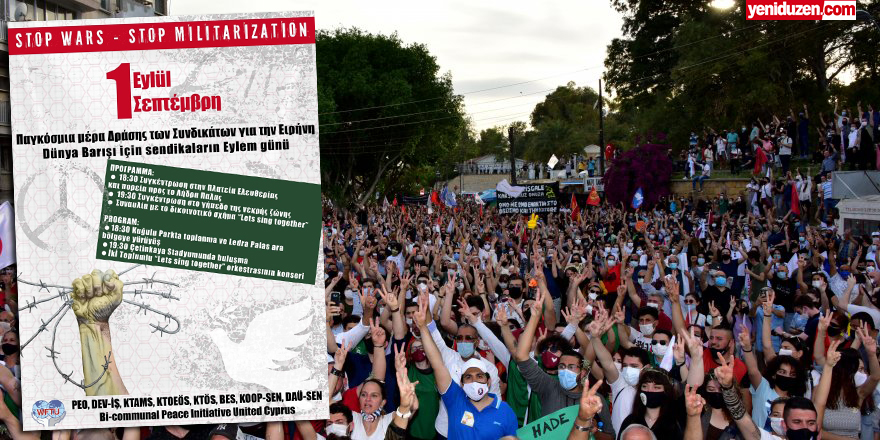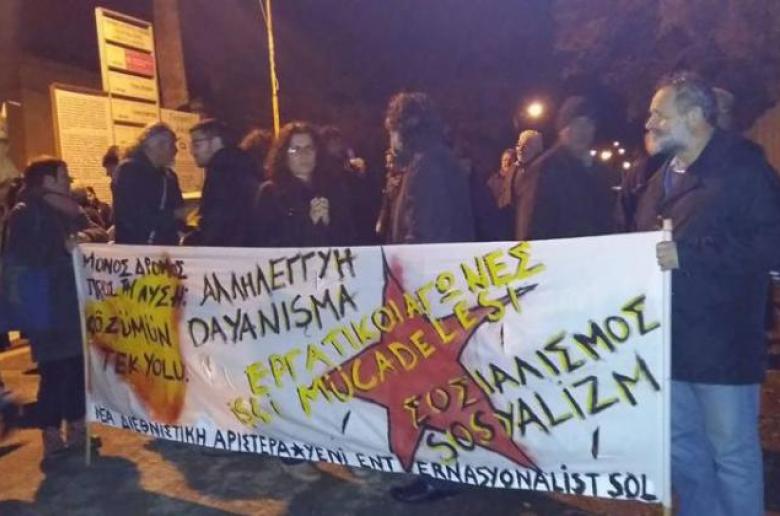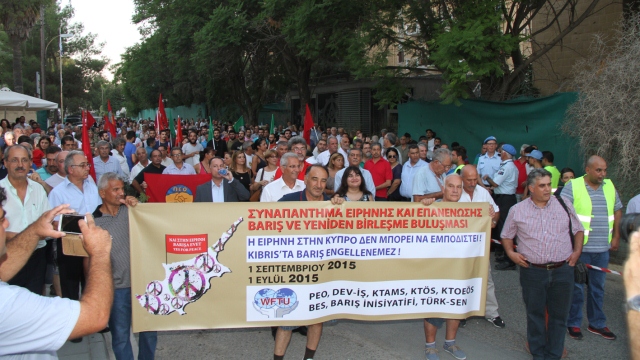International Peace Day on September 1st holds a significant place in the calendars of greekcypriot and turkishcypriot trade unions and left organizations. Over the last years, except for a brief interruption during the pandemic, they have consistently come together to march. This annual event draws participants from both sides of the divide that unite at the green line to mark the occasion with demonstrations.
The origins of this day trace back to post-World War II Germany, when the anti-war movement and labor unions established it as the Anti-War Day. This date was chosen to commemorate the Nazi invasion of Poland in 1939, which marked the onset of World War II. The slogans “Never Again September 1st, 1939″ and “War is a crime against humanity” prevailed in the demonstrations. This idea gained traction in other countries as well, and the day evolved into what is now known as International Peace Day.

In Cyprus, the tradition of holding a demonstration on this day was initiated by turkishcypriot trade unions and left-wing groups. Each year, the march in the north is akin to the May Day celebrations.
With the subsequent opening of checkpoints, Greek Cypriot trade unionists, activists, and individuals from left organisations began to actively participate in this demonstration. A pivotal moment arrived in 2010, when the first bicommunal demonstration took place on September 1st. This event saw two parallel demonstrations converging at the green line. Notably, this protest marked the debut of a bicommunal protest wave, organised by trade unions and left-wing parties. It attracted a substantial number of participants and laid the groundwork for the joint demo of May Day 2014.

United for peace, against war, nationalism and fascism
The collective effort of trade unions and the Left for peace in Cyprus has huge significance. These forces have the potential to really bring peace, unlike bourgeois leaders who advocate for the interests of the ruling elites and international powers.
The peak of bicommunal mobilisations occurred between 2015 and 2017. It coincided with the negotiations led by Akıncı and Anastasiades, both elected with a mandate to solve the national question. Unfortunately, during this period, the leadership of the bicommunal movement, comprising by trade unions and traditional left-wing parties, invested all their hopes in these negotiations. Demonstrations resounded with slogans that called upon these leaders to find a solution. However, the negotiations reached a deadlock again in 2017. This was because the negotiators were ultimately representing the conflicting interests of the elites of the two communities, as well as Turkey and Greece. Consequently, the bicommunal movement suffered a setback, and subsequent protests lacked the magnitude of preceding years.
Nonetheless, the current year has witnessed the emergence of new forces, particularly from the youth, driven by the determination to fight for peace even when it’s evident that the leaders are not inclined to resume negotiations. In June, a pivotal meeting convened where youth organizations from both sides agreed on the need to take action, advocating for the opening of additional checkpoints and collaborative efforts between the two communities to address shared concerns. These concerns include issues such as environmental protection and the rights of women and LGBTQ+ people. Subsequently, the bicommunal pride event was organized in June, drawing increased participation.

Together against nationalism and fascism
This year’s September 1st rally unfolds against the backdrop of a calculated provocation orchestrated by Tatar’s regime along the green line, coupled with the attacks by the fascist group ELAM and their allies on refugees and immigrants in Chloraka, Pafos.
The events in Pyla and Chloraka underscore the fact that a bicommunal movement is urgently needed. They underscore the necessity for the movement to confront the forces of nationalism and fascism.
Tatar’s regime exploited the legitimate need of Pyla’s inhabitants for smoother cross-border movement, deliberately instigating a confrontation with the United Nations peacekeeping force as a means to assert his sovereignty claims.
Conversely, the southern fascists endeavor to assert dominance over the Chloraka region, resorting to violence to displace immigrants. As their influence grows, their targets are poised to extend beyond immigrants, encompassing turkishcypriot and greekcypriot left activists.
The time has come for the movements on both sides to restart the struggle for:
- the opening of additional checkpoints at strategic crossing points
- the simplification of border crossings
- the establishment of joint services such as insurance and telecommunications to facilitate easier mobility between the island’s two sides
We need a bicommunal reunification movement that stands against nationalism and fascism, demanding political equality within the framework of a socialist federal solution.



